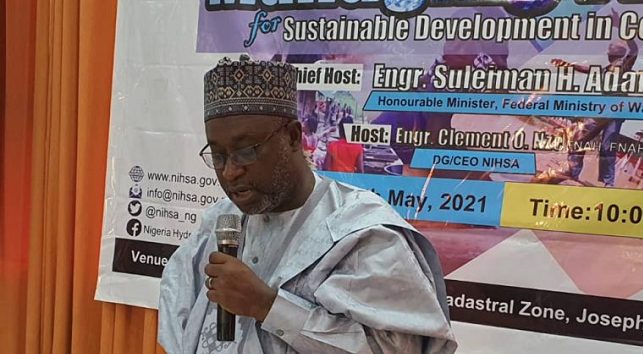No fewer than 28 states are likely to experience severe flooding this year, the Minister of Water Resources, Suleiman Adamu, announced on Thursday, May 6, 2021.

Adamu dropped the hint at the public presentation of the 2021 Annual Flood Outlook (AFO) of the Nigeria Hydrological Services Agency (NIHSA) in Abuja.
He listed the states to include Abia, Akwa Ibom, Anambra, Bauchi, Bayelsa, Benue, Cross River, Delta, Ebonyi, Edo, FCT, Gombe, Imo, Jigawa, Kaduna, Kano and Kebbi.
Others are Kwara, Lagos, Nasarawa, Niger, Ogun, Oyo, Rivers, Sokoto, Taraba and Zamfara.
The minister noted that the 2012 flood brought about massive destruction of lives and property across the country.
This, he noted, necessitated the putting in place, of proper mechanism to prepare Nigerians to confront the disaster whenever it occurred.
According to him, the NIHSA forecasts have increased the awareness in the citizenry and led to taking measures to prevent severe flood damage.
“This year, we will be grappling with the two threats of the ongoing COVID-19 pandemic and the impending floods as predicted in the AFO.
“The flood projections show varying severity across parts of the country.
“In summary, the 2021 AFO forecast indicates that 302 Local Government Areas (LGAs) in 36 states including the FCT will fall within the moderate probable flood risk areas.
“It is expected from the forecast that 121 LGAs in 28 states will fall within the highly probable risk areas.
“The states surrounding Rivers Niger and Benue are, without doubt, going to experience severe flooding.
“Floods come with attendant health risks through the contamination of potable water sources. The 2021 flooding will be exacerbated by the continuing ravages of the COVID-19 pandemic,” he said.
The minister urged Nigerians to do all within their power to give succour to the populace grappling with the twin problems.
He said stakeholders, including policy makers and tiers of government should rise to the challenge of the impending flooding and take appropriate measures such as clearing of waterways and flood paths to contain it.
Adamu noted that the ministry was controlling water flow in streams through construction of dams, reservoirs, artificial lakes and rivers, with a view to making it less destructive.
The Director General of the NIHSA, Mr Clement Nze, stressed the need for state and local governments to restore rivers to their natural courses and reduce indiscriminate encroachment on waterways.
He expressed worry over the refusal by some states to adhere to early warnings about floods and said it had resulted in the devastating effects being recorded annually in parts of the country.
Nze stressed that enforcement of town planning codes in the country would go a long way to managing construction of houses and drainage appropriately.
“We are calling on states to relocate people that live in waterways and flood plains.
“They should desilt their rivers, drainage and water channels. Removal of refuse, weeds and water hyacinth is very important,” he said.
The Director General, National Emergency Management Agency (NEMA), Mohammadu Muhammed, noted that the agency had enjoyed robust partnership with NIHSA as a critical stakeholder in disaster management.
According to him, NIHSA’s AFO has been a veritable took for NEMA in flood preparedness, mitigation and response since 2013.
Muhammed said the agency had also established three automatic weather observation stations in Nasarawa, Gombe State and Ekiti to enhance flood forecast and management in Nigeria.
By Tosin Kolade
